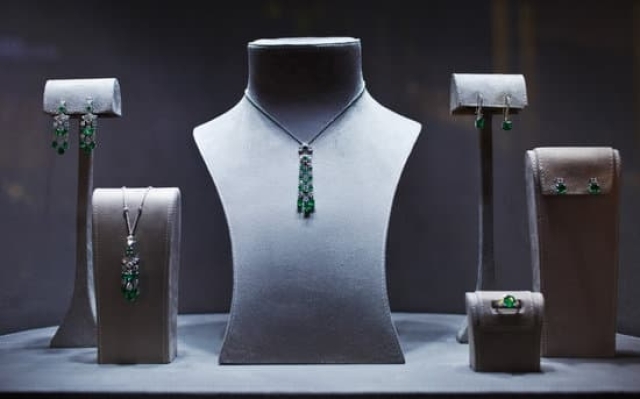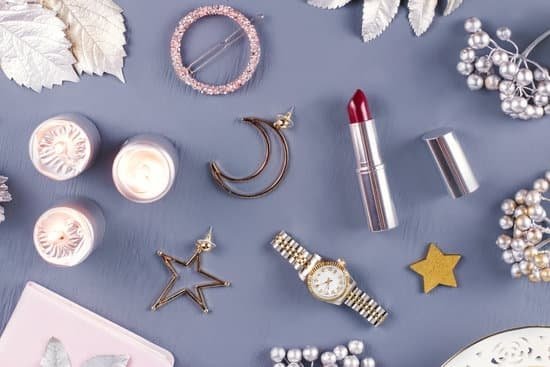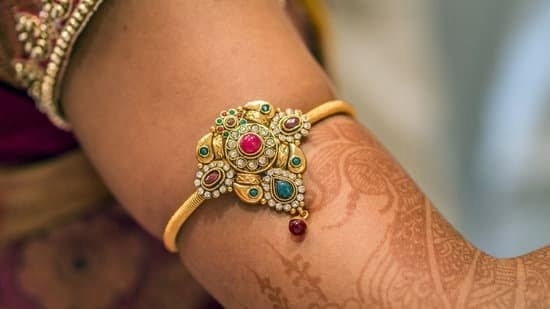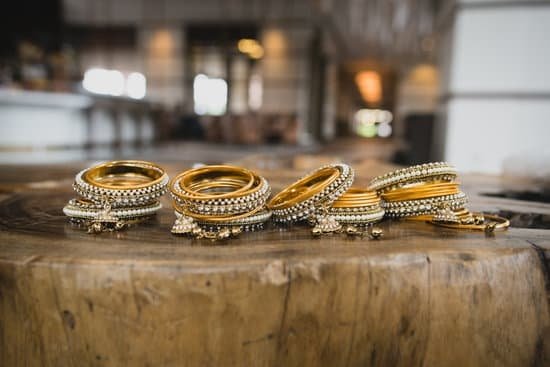Soldering jewelry is a technique used to join individual metals together, such as in earrings or necklaces. Soldering can be done with various materials, which can include fluxes, solders, and alloys. Each material has its own unique properties that make them suitable for different uses in jewelry-making.
Fluxes are chemical mixtures used in the soldering process of metals. This material helps remove the oxides on metal surfaces that causes unwanted impurities and prevents bonding between two surfaces when heated.
Fluxes also act as a protective layer when using higher temperature solders due to their ability to help disperse heat more evenly through the piece being soldered. They come in either liquid or paste form and they come in a variety of compositions depending on the metal you are working with and what kind of jewelry it’s for.
Solders are chemical additions used to bind together two metallic pieces permanently, making them one solid object when heated to specific temperatures for a set period of time. The most important factors when selecting solder are its melting temperature (which must be lower than the parent alloy), strength, resistance to oxidation, and whether it’s lead-free (for use with silver).
There is a wide variety of types including hard solder, medium solder, soft solder, and extra-soft solder. Most commonly hard solder is used for gold items while soft or extra-soft is required if working on silver pieces.
The last material needed for soldering jewelry is an alloy filler rod (sometimes referred to as “solder wire”) which provides additional strength to pieces after heating them together via dangerous electrical arcs is not(an option). Aluminium alloys are commonly used due to their malleability and ability to dissipate heat quickly the same way flux does but without the need for high temperatures.
The size and method of delivery depends heavily on what kind of project you’re planning so make sure you have enough on hand prior starting your workpiece. Alloy rods can come in rod form, stick form with various diameters from thin wires up multiple millimeters thick bars.
By having all these materials ready ahead of time necessary soldering steps will be smoother which ultimately leads to better results during execution. So choose your materials carefully before beginning your soldering project.
Types of Soldering Supplies for Jewelry Making
Soldering supplies for jewelry making are essential for completing projects. Without proper and safe tools, the process of soldering can be very difficult and dangerous. Knowing which type of supplies to use and how they should be handled is the key to successful soldering work.
For heating, a soldering iron or torch are two common tools used in jewelry making. Soldering irons come in a variety of sizes, wattages, and temperature controls; however, larger models will often provide better control over temperature fluctuation than small versions. A torch is also an option when working with thick metals or multiple layers; however, it does require safety gear including safety glasses and protective clothing due to the intensity of the heat produced by the flame.
Proper soldering flux must also be used when working with metal as it helps create a clean joint between two pieces of jewelry material before soldering takes place. Flux also helps prevent oxidation which can occur when metals are heated or overheated during the soldering process. This is especially important if you’re using precious metals like gold, silver, or platinum as they can potentially become damaged from excessive heat or improper fluxes.
In addition to various tools for heating and fluxes, solder wires will also need to be purchased when working on projects with metal components. The wires come in different shapes (flat or round), colors (yellow or silver) and sizes (thickness).
Be sure to purchase the appropriate wire size for your project as too large may lead to excess solder being used while too thin may not provide enough strength for the connections Lastly, brush tips will aid in applying solder evenly onto pieces – taking care before use so that precious metals are not scratched during application of solder.
Preparing the Materials for Soldering Jewelry
Soldering jewelry is a great way to join two pieces of material together, but it requires the right materials. Prior to beginning the soldering process, you should make sure you have the following items on hand: soldering pick, flux, solder, tweezers, carbon block or crucible tongs, and a heating source. Knowing how to properly assemble these items will ensure that your finished product is durable and well-constructed.
The first step to soldering is choosing the type of solder that best fits your project. You can purchase many different types of solder for jewelry and metalwork from online or local stores. Most silver solder melts at approximately 1180°F (640°C), while brass may require temperatures over 1600°F (870°C). Depending on the materials you are working with you can choose a suitable solder to best meet your needs.
Once the appropriate solder has been selected, it is important to prepare the materials. Before attempting soldering on delicate pieces it is important to make sure that all parts are correctly held in place with clips, clamps or specially designed jigs. This will keep them secured in one place during the joining process so they do not move or come apart unexpectedly while heated.
The next step in preparing for soldering jewelry is fluxing. Flux helps by reducing oxidation so that the junction between two pieces of metal are able to form an air tight bond when heated. It also helps prevent dirt and tarnish from forming on newly joined metals prior to their cooling off. Be sure not to use too much flux as excess may cause areas of molten metal to appear rough rather than smooth after cooling down.
Finally, it is important not to forget that fire safety is essential when performing hot joint techniques such as soldering jewelry as a source of heat could potentially harm yourself or those nearby if proper safety measures are not taken into consideration (e.g., maintaining a safe distance from other people).
When operating any heat source be sure always to take precautions and wear protective attire such as gloves when necessary for additional protection against burns and injury due to high temperatures reaching up in certain spots during this process.
Overview of Different Soldering Torch Types and Techniques
Soldering is often a critical step in the production of jewelry pieces, as it allows metals and other materials to be joined together for stronger connections and beautiful shapes. There are numerous types of soldering torches available, with each one offering its own unique advantages and disadvantages. This article will explore these various torch types and techniques in depth.
Essential Soldering Tools
The most common tool used for soldering jewelry is a mini-torch, which combines oxygen and propane gas to create intense heat that can melt even the toughest metals. When using a mini-torch, it is important to use a safe work space with proper ventilation to prevent fumes from collecting in enclosed spaces.
Additionally, safety goggles should always be worn to protect against potential eye injuries due to flying sparks. A handheld butane torch can also be used when accuracy is desired or when needing to access tight spaces that larger torches cannot reach.
Different Types of Solder
When selecting solder for a given project, it is important to consider the different types available in order to ensure compatibility with the material being worked on. For instance, karat gold or sterling silver needs hard solder while copper requires soft solder due to its inherent malleability.
It is also important that solder melts at temperatures below those of the metals used in order to make sound connections without risk of damaging components. The most common type of solder used by jewelers tends to be easy-flow because it has a low melting point making it ideal for intricate projects.
Flux Selection
Flux serves as an agent that helps prepare surfaces before soldering by removing oxidation buildups or bindings on metal surfaces that interfere with the metal’s ability to bond correctly during welding or brazing operations. When selecting flux for any given project, it is important match both the mineral content and acidity level needed for optimal results based on the variety of metals being used (e.g., brass needs an acidic flux).
Many current variations contain chemicals such as zinc chloride which assist in speeding up the process by breaking down surface tension at lower temperatures than traditional blends such as rosin paste while still protecting surrounding areas from direct heat damage during soldering operations.
Safety Measures to Take When Soldering Jewelry
Before starting any soldering projects it is important to review safety measures to make sure you are not placing yourself in danger of harm. Soldering jewelry can be a fun and creative activity, but precautions need to be taken in order to protect yourself from potential injuries. Here are some safety tips when soldering:
- Wear safety glasses or goggles while soldering.
- Always keep your work bench clear of dangerous materials.
- Be sure to have a fire extinguisher on hand and know how to use it in an emergency.
- Make sure that the area where you do the soldering is well ventilated.
It is also important to understand the types of materials required for successful soldering. In addition to the usual tools like a soldering gun or torch, clamps, copper wires, tweezers, pickle and patina compounds, certain other supplies may also be needed. These include solder fluxes, solder wire, flux brushes and safety items such as face shields or respirators that will protect from harmful fumes.
Having an adequate heat source for completing your work is essential when it comes to achieving quality results with your jewelry-soldering projects. Opting for an adjustable temperature device will ensure precise control over the heating so that each component part has adequate heating time and no overheating occurs resulting in accidental damage or injury.
Common types of heat sources used for this process include blowtorch flames generated by butane fuel, electric soldering guns, induction stoves powered by electricity as well as ultrasonic cleaners operating at an increased frequency and using sound waves.
Lastly one needs metal fillers such as brazing alloys along with other specialty metals like gold alloys which serve as solder substitutes while carrying out intricate designs with gemstones or creating channel settings for diamonds; with some colors providing desired effects or are designed exclusively for occasions like engagement rings where expensive stones require extra security while being set into place.
Explore Soldering Tools and Accessories Used for Jewelry Making
Depending on the project, soldering jewelry requires a few essential tools and accessories. It isn’t complicated and requires just a few items that can be found at any hardware store. With the right equipment, you can solder your own jewelry pieces like a pro. Following are the elements needed for jewelry making:
- Soldering Iron: Select an iron according to the size of your components. A lower wattage metal soldering iron is ideal for small-scale projects.
- Safety Accessories: Protective eyewear, gloves, well-ventilated space and anti-static mat should always be used when soldering.
- Solder wire: Solder comes in various alloys suitable for different tasks. Silver-bearing solder wires are generally considered best for projects involving mixed metals.
- Flux: Flux is a cleaning agent that provides maximum adhesion between the metals and solder during heating.
- Pickle Pot: Pickle pots are used to dip hot finished pieces into water or vinegar solution which will clean off dirt and firescale.
Before starting any soldering project, practice with an inexpensive kit to get familiar with operability of each tool; learn how components need assembling before heating them up. While assembling prepare enough material for components in advance so there is no congestion on workbench while soldering componentes together.
A helping hand makes soldered jobs easier and faster; use tweezers, flat nose pliers, round nose pliers and nylon jaw pliers to hold layers firmly while other hand remain free for applying heat source with the tip of soldering iron. This prevents hands being burnt by touching hot metals accidently along with other materials kept near work table.
For advanced projects it may become necessary to construct contours around settings with several pieces of wire or sheet solders like doming blocks, hammers etc., these surface finishing details might require additional tools but results will make amazing outcomes once finished successfully slowly and carefully.
Examples of the Different Metal Pieces Used for Jewelry Soldering
1. Sheet Metal Sheet metal is a flat piece of material in various shapes and sizes and can be cut into custom jewelry pieces.
Common metals used to make sheet metal for jewelry include sterling silver, brass, copper and steel as they are known for their malleability and strength when used as a protective layer or backing material for pieces. This metal is commonly used in making both traditional designs with a modern twist such as hoop earring components or cuffs, and intricate filigree pieces which involve bending the sheet metal into more detailed shapes.
2. Bezel Wires Bezel wires are thin strips of metal wire that can be bent into any shape to fit the size of your desired stone setting, with the typical range of thicknesses ranging from 1mm to 4mm wide. Popular metals used to make bezel wires include copper, gold-filled brass and sterling silver but could also include base metals such as lead free pewter and iron which are usually plated with gold or silver finishes.
They also come round and flat depending on their intended use; rounder versions tend to be easier to bend whilst flat wires provide a sturdier frame when soldering them together. Generally speaking, bezel wires may require additional protection by adding jumpring findings if they are extremely thin or have intricate designs so that they do not snap apart during use.
3 Parts For Jumprings Jumprings are small circular rings primarily made in either sterling silver, gold-fill, copper, brass or a combination of all four – the type you use depends on the colors you want your jewelry to ultimately have. These parts come in various sizes ranging from small (1 – 2mm) for delicate dangles and bead spacers to large (6 – 8mm) providing support in chunky statement pieces.
The areas which jumprings attach loops/hooks onto will typically need filing down after soldering them together in order for then not over-burden other sections which jewellery making. To achieve this, cutters, files & texturing tools will be needed ; some more complex detailing may require calipers depth gauges or saws.
Tips for Troubleshooting Common Soldering Problems
Soldering is an important technique to bond materials together. It can be a tricky, intricate process when it comes to jewelry making. If something goes wrong during the joint formation it could mean a lot of wasted materials and time. Here are some tips for troubleshooting common soldering problems:
- Damp Flux: This is caused by excessive humidity in the immediate area. To fix this issue, you will need to make sure that your workspace is well ventilated and relatively dry.
- Tarnished Joints: This happens when the metals are exposed to too much heat for too long, resulting in discoloration or tarnish overtime. To resolve this, reduce the heat of your soldering iron after applying solder and make sure that it cools adequately before moving on to the next piece of jewelry.
- Not Enough Solder: This occurs when not enough flux or heat is applied to create a strong bond between two metals. To counteract this, use more flux and increase your soldering temperature gradually until you get satisfactory results.
One way to avoid these problems altogether is to practice proper safety techniques while working with hot materials and/or tools. Always wear appropriate protective gear such as fireproof gloves, safety glasses, and an apron or lab coat before beginning any project involving hot objects or open flames.
It’s also beneficial to use lead-free solder as it has better flame resistance than traditional lead-based solder has which makes working with it much safer for both you as well as the environment in general.
To improve soldering success rate further, start with clean or brushed closures which will help ensure better connection quality between your pieces of metalwork and therefore better soldered joints due to less contamination of existing surfaces from fingerprints oils or debris otherwise present on new natural finishes materials surface.
Make sure your soldering iron tip isn’t corroded by wiping away any oxidation as often as possible; A fresh tip means more efficient transfer of heat during the bonding procedure which leads less mistakes made regardless of how experienced you may be working with jewellery related tasks.
Also do not forget about using ample amounts of flux compatible with the metal being worked with paying attention towards its melting temperature range so its properties aren’t compromised during this important part of the process either.
Other Considerations for Soldering Jewelry Successfully
When soldering jewelry, the type of solder and equipment you use play a very important role in the success of your project. The right products will make your project go without issues, while making sure you are safe while soldering.
First off, when it comes to choosing solder type for your jewelry project, soft solders are typically used since they melt at lower temperatures than hard solders do.
Depending on the application and metal used for your particular jewelry piece, low to medium-temperature and silver-bearing/sheet solders should be used for projects like decorative rings, earrings, and pendants etc., while high-temperature hardware store solder should be reserved for structurally integral jewelry pieces such as brooches or clasps where strength is most important.
There are other speciality solders that can be purchased at larger craft stores or specialty shops as well depending on the application.
The tools needed to successfully complete a soldering jewelry project can range from simple tools like tweezers or wire cutters to more advanced tools like butane torches, vices, fire bricks and flux paste. Investing in good quality equipment should be considered because it will save money in the long run by producing more successful projects with fewer problems.
Safety is another very important consideration when it comes to any kind of jewellery work with torches so proper safety gear is an absolute must. Non-inflammable work clothing like aprons made from Kevlar or treated canvas cloth are great choices as they help protect your skin from any eventual splattering of molten metal during construction processes such as riveting or plate joining.
It’s also essential that eye protection and protective gloves be worn both during projects involving hot objects or live electrical wires as well as prior to tearing down setups afterward.
Conclusion
Soldering jewelry is a great way for beginners and experts alike to make their own beautiful pieces. High-quality materials are important for soldering jewelry. This includes quality jewelry solder, an adequate heat source, flux, soldering boards, tools like clamps and tweezers, and additional items that depend on the individual’s style.
The right solder is essential for quality work when it comes to soldering jewelry. The metals used in most pieces require different temperatures of solder for the best result in terms of strength and durability.
If the wrong type of solder is used or the incorrect temperature of heat applied then it can cause poor jointing with the metal components, leading to a weakened piece that won’t last long before it needs repair. To ensure proper quality control when selecting your solder look at labels detailing melting temperatures for each particular product.
Heat sources are another key item needed for soldering jewelry as they help maintain the temperature of those pieces while you work on them. Traditional tools include propane or natural gas torches which have been commonly used in crafts such as welding and furniture making since antiquity.
Another option now available are higher tech electric soldering irons that offer more precision than what was once possible through gas torches. These also provide different tip sizes to work in intricate spaces or produce finer lines when decorating pieces – something not else available with an open flame variation.
Finally, flux should also be considered a necessary tool when it comes to soldering jewelry as it helps with conduction between pieces of metal being fused together by preventing oxidation which can occur quickly if slight miscalculations misalign components from one another at high temperatures.
This ensures areas around a joint remain chemically clean so that no matter how tight or small seam forms its still perfectly sealed making even complex designs bulletproof against damage occurring due to bad connections upon completion.
Additionally, flux can also act as a protector if you happen to bump into your delicate piece and accidently break off after all these efforts made towards perfectionistic design.

Welcome to my jewelry blog! My name is Sarah and I am the owner of this blog.
I love making jewelry and sharing my creations with others.
So whether you’re someone who loves wearing jewelry yourself or simply enjoys learning about it, be sure to check out my blog for insightful posts on everything related to this exciting topic!





